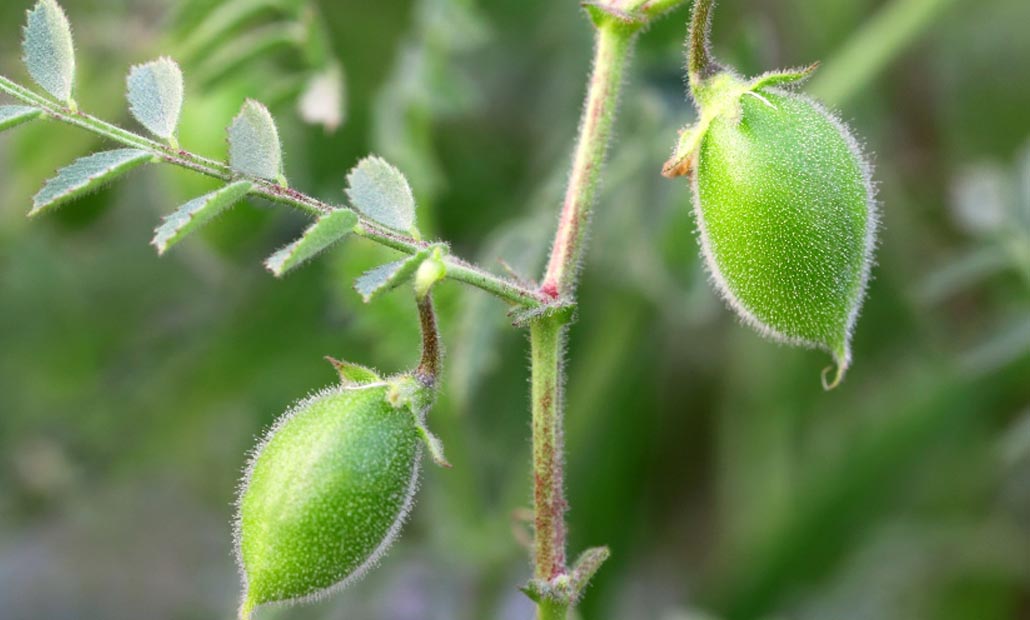Professional Web Portal and Printed Directory about Companies, Products and Services from the Horticulture, Gardening and Associated Markets.

In the pantry of the majority of Spanish homes is one of the weapons most nutritious, healthy and sustainable that we have to fight against Climate Change: the legumes. The scarce amount of water they need for their growing, their resistance to drought and frost, its minimal carbon footprint and its ability to fix nitrogen to the soil, increasing its fertility, and make them a vital crop to feed the planet in a sustainable way in order to combat Climate Change.
In recognition of the United Nations, through the FAO, decided last year to dedicate officially every February 10, the World Day of the Legumes, within its initiative "Targets in 2030 of the UN for Sustainable Development and Zero Hunger", for three reasons: its role in the sustainability of the planet; its strategic importance in global food security (are the mainstay of millions of people); and its nutritional benefits keys to getting a balanced diet and take care of our health.

In addition, FAO has also emphasized a very important issue in developing countries: the cultivation and trade of legumes depends in many rural areas of the work of women, that you grow and sell it, or exchange it for other foods and, therefore, help their domestic within their communities.
If in the developing countries, legumes are key to feed the population due to its low cost, ease of storage and use, in developed countries the trend of the past few years speaks of a food every time more fashionable. Great chefs from all over the world have regained the legumes in their cards and are also a trend among many groups of young people, like vegans, athletes or people concerned about the environment.
In Spain, after many years of decline, in the last five years is recovering gradually, the consumption of legumes, which has grown by over 8% in the accumulated of the past few years. According to the latest study of "The Power in Spain to 2019" prepared by Mercasa, in the year 2018, Spanish households consumed 146,6 million kilos of legumes, and spent 284,3 million euros in these products. In per capita terms, it came to 3.2 kg of consumption per person and year, but very far as yet from 7 kg per person per year consumed on average in the world.

Increase the consumption and enhance your crop
In these moments the main challenge in Spain in these moments is to continue to increase the consumption of pulses up to 3-4 servings per week recommended by all experts and institutions. To push in this direction, the Spanish Nutrition Foundation has launched a "Nutrition Declaration on the Pulses" which highlights all of the benefits of this food.
From the foundation stand out in this Statement that legumes pack a punch of vegetable protein of high quality (20-30%) and carbohydrates mostly complex (30-60%), with an almost non-existent fat content (1-5%). Legumes also provide fiber, minerals (K, P, Ca, Mg, Fe, Zn, Se, Cu and Mn among others), vitamins (most notably those of the B group and E) and other bioactive compounds. Precisely, thanks to these compounds, the beans have some potentially beneficial effects on cardiovascular disease, diabetes or cancer, as well as for healthy aging.
This desired increase in consumption should also go accompanied by institutional policies that support the cultivation of legumes in Spain, which for decades has been abandoned for other more profitable crops when not having aid of the CAP. Increase the hectares of crop is also obliged to achieve the goal of more sustainable agriculture and to reduce CO2 emissions at the national level.
From the Association of Legumbristas of Spain (ALE) are optimistic about consumption growth as the legumes are not a dish of a seasonal nature and there are a multitude of ways of eating in order to get to those four weekly rations: they can be a part of stews and traditional in its multiple varieties in our rich cuisine; light meals and refreshing, such as salads or cold creams; purees of legumes and protein for athletes; from appetizers such as humus; and even, breakfast cookies, and other sweets made with meal of legumes.
In this sense, we are investing in innovation and new presentations with new carton packaging such as "Tetra Recart" for easier management and logistics, which are offering cooked or traditional legumes, more healthy. Also, there are already new formats of legumes Bio in paper bags or organic formats "Doypack" with mixtures of legumes with cereals and vegetables, ready-to-heat, open and eat.
In short, I beans are the best way to get a balanced diet, healthy and sustainable in the difficult challenge to feed 8,000 million people and the fight against Climate Change.